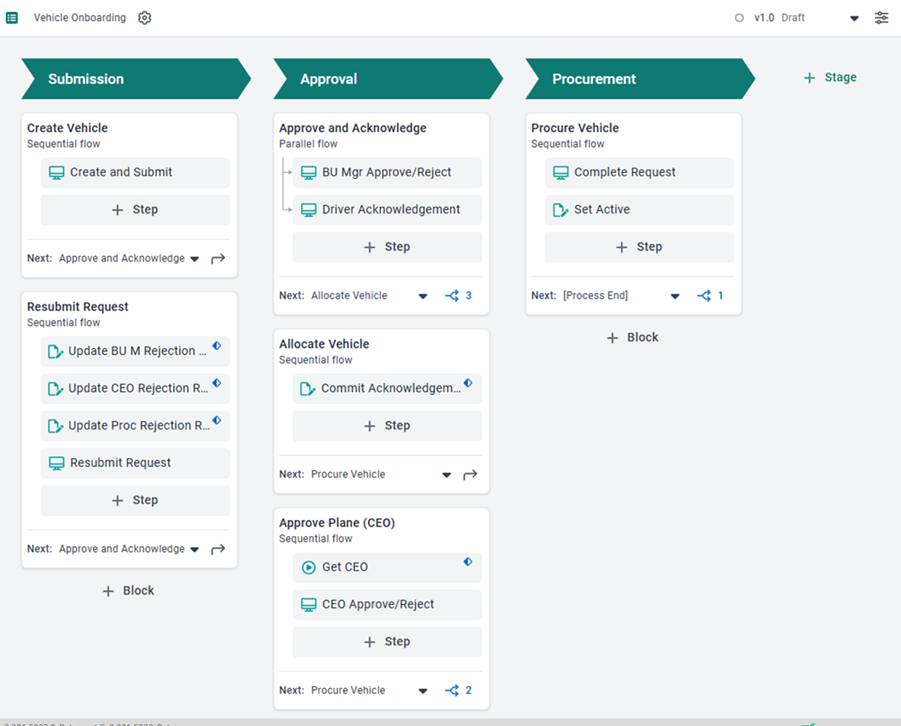Before you build or automate a process, it’s important to understand how ReadiNow’s Process tool organises workflows. Each process is structured into three main layers: Stages, Blocks, and Steps. Together, they provide a clear and scalable way to map out business operations.
| Component | Purpose |
|---|---|
Process | The full container for your business operation — defines its purpose, flow, and logic. |
Stage | A logical grouping of steps — typically representing a high-level phase (e.g. “Submission”, “Review”). |
A unit of execution within a stage. Blocks control how steps run — in Parallel, Sequential, or Switch (conditional) modes. | |
A specific task or action to be completed — e.g., display a form, run a workflow, create or update a record. |

Stages - The High-Level Journey in a Process
Within a process are a series of milestones we call stages. Stages represent the major phases in a business process. They group related tasks into logical segments that reflect the natural flow of business activities which may be performed by different roles. Each of these stages marks a meaningful transition in the process—from initiating a request, through decision-making, to fulfillment.
Functionally:
- They help break the process into manageable sections.
- They allow for clear sequencing, so you can track progress across milestones.
- In automation terms, stages often correlate with process checkpoints where status might be updated, tracked, or reported.
Blocks – Focused Sub-Processes
Blocks are discrete or separate units of work within a stage. You can think of them as containers for related steps that make up a single sub-process. They're like functions or task bundles that belong together because they serve one tightly-defined goal such as submitting a request, approving it or handling an exception.
Functionally:
- Each block typically has a specific trigger and output.
- They allow branching, as you can see with “Vehicle Rejection” or optional approvals.
- They may run sequentially or in parallel depending on business rules.
Steps – Core Actions of the Process
Steps are the individual actions or tasks that are performed in order. They are the building blocks of your automation logic—where the actual work gets done, whether it's a system task (e.g. data entry) or a human interaction (e.g. an approval). Steps are what actually get executed—each one moving the request closer to completion.
Functionally:
- Each step usually maps to a specific action (e.g., workflow call, form submission, document approval).
- Steps are where you define business rules, data inputs, validations, etc.
- In your tool, they appear to be arranged sequentially within a block, which reflects the micro-flow logic.